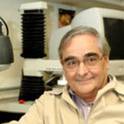Published isothermal degradation curves for chlorophyll A and thiamine in the range 100–150 °C and the inactivation curves of polyphenol oxidase (PPO) in the range 50–80 °C could be described by the model C(t)/C0 = exp[−b(T)tn] where C(t) and C0 are the momentary and initial concentrations, respectively, b(T) a temperature dependent ‘rate parameter’ and n, a constant. This suggested that the temporal degradation/inactivation events of all three had a Weibull distribution with a practically constant shape factor. The temperature dependence of the ‘rate parameter’ could be described by the log logistic model, b(T) = loge[1 + exp[k(T − Tc)], where Tc is a marker of the temperature level where the degradation/inactivation occurs at a significant rate and k the steepness of the b(T) increase once this temperature range has been exceeded. These two models were combined to produce a non-isothermal degradation/inactivation model, similar to one recently developed for microbial inactivation. It is based on the assumption that the local slope of the non-isothermal decay curve, ie the momentary decay rate, is the slope of the isothermal curve at the momentary temperature at a time that corresponds to the momentary concentration of the still intact or active molecules. This model, in the form of a differential equation, was solved numerically to produce degradation/inactivation curves under temperature profiles that included heating and cooling and oscillating temperatures. Such simulations can be used to assess the impact of planned commercial heat processes on the stability of compounds of nutritional and quality concerns and the efficacy of methods to inactivate enzymes. Simulated decay curves on which a random noise was superimposed were used to demonstrate that the degradation/inactivation parameters, k and Tc, can be calculated directly from non-isothermal decay curves, provided that the validity of the Weibullian and log logistic models and the constancy of the shape factor n could be assumed. Copyright © 2004 Society of Chemical Industry
- kinetics,
- thermal processing,
- thiamine,
- chlorophyll,
- polyphenol oxidase,
- mathematical modeling
Available at: http://works.bepress.com/micha_peleg/20/
